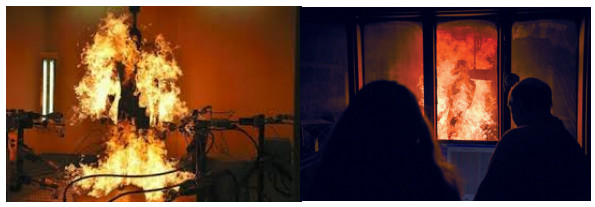1) Research on the heat transfer mechanism of individual soldier's flame retardant equipment By simulating the battlefield fire conditions of different intensities, the changes of human skin surface heat flow and skin temperature by burning dummies, a good human body-clothing-fire environment conditions are created, and the individual soldiers are flame retardant The study of equipment heat transfer mechanism provides an important research method.
2) Research and screening of flame retardant fabrics for individual soldier equipment Quantitatively test the flame retardant properties of different individual soldier equipment fabrics through the burning dummy system, guide the research on flame retardant fabrics, and screen out flame retardant fabrics with excellent performance.

3) Structure and style design of individual soldier's flame retardant protective equipment The structure and style of individual soldier's flame retardant protective equipment have a great influence on its flame retardant performance. Even if the equipment has the same fabric, but the structure is different, or the opening is different, its flame retardant Performance also showed a big difference. The actual wearing condition of the human body in the fire field is reproduced by the burning dummy, and the structure and style design of the individual soldier's flame-retardant protective equipment such as flame-retardant combat uniforms, nuclear-biochemical flame-retardant combat uniforms, flame-retardant shoes and boots and other flame-retardant protective equipment are guided.
评论
发表评论